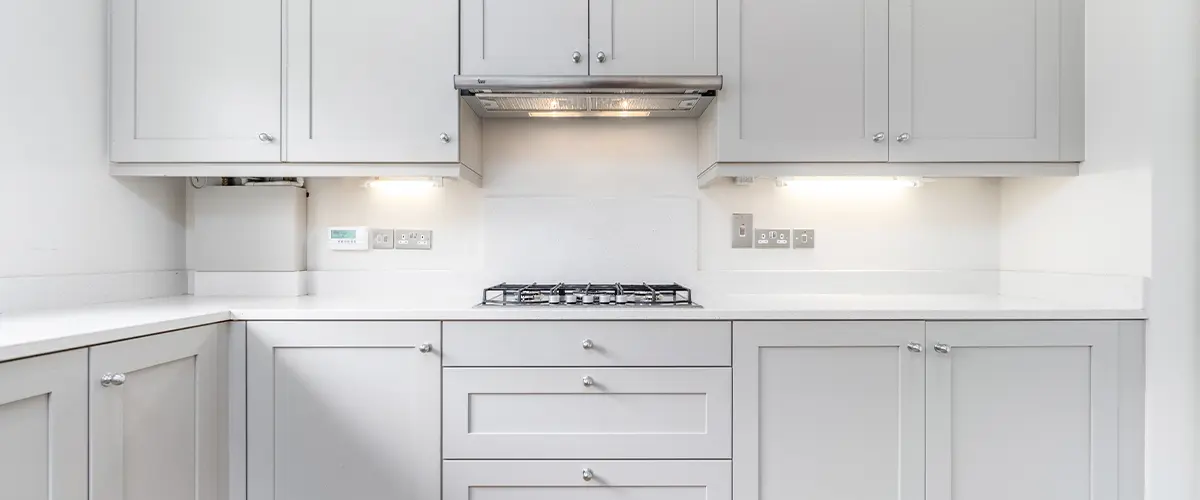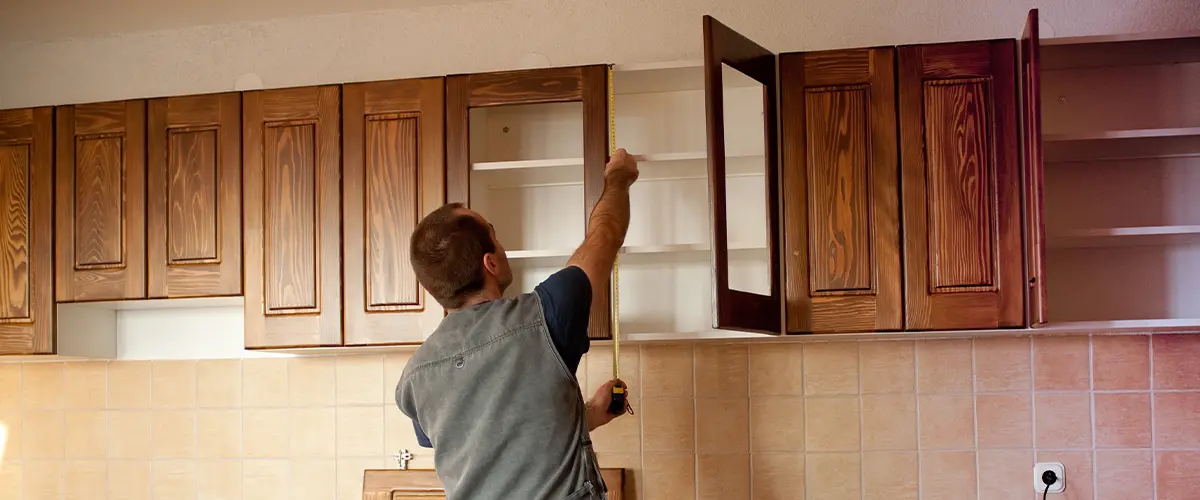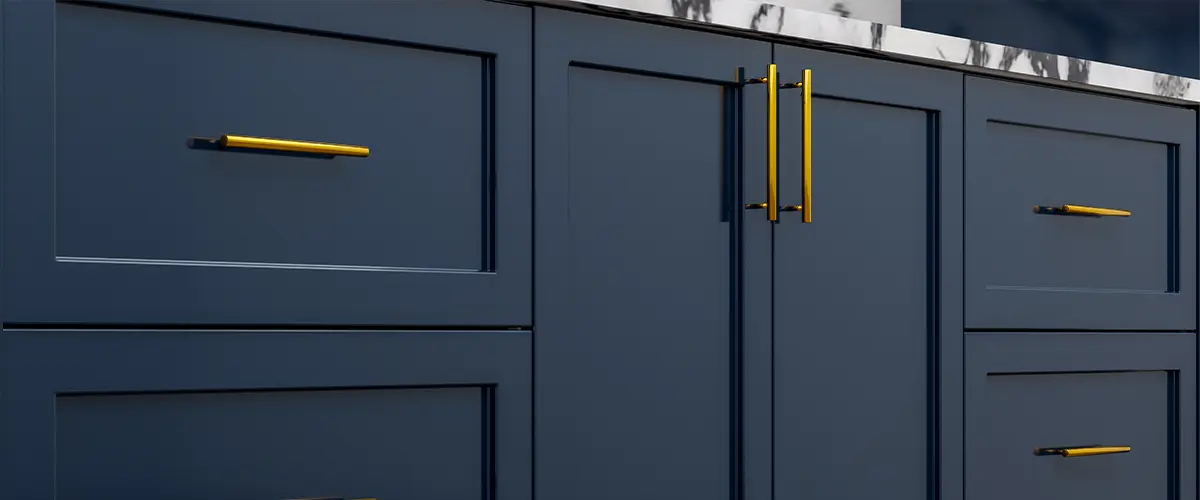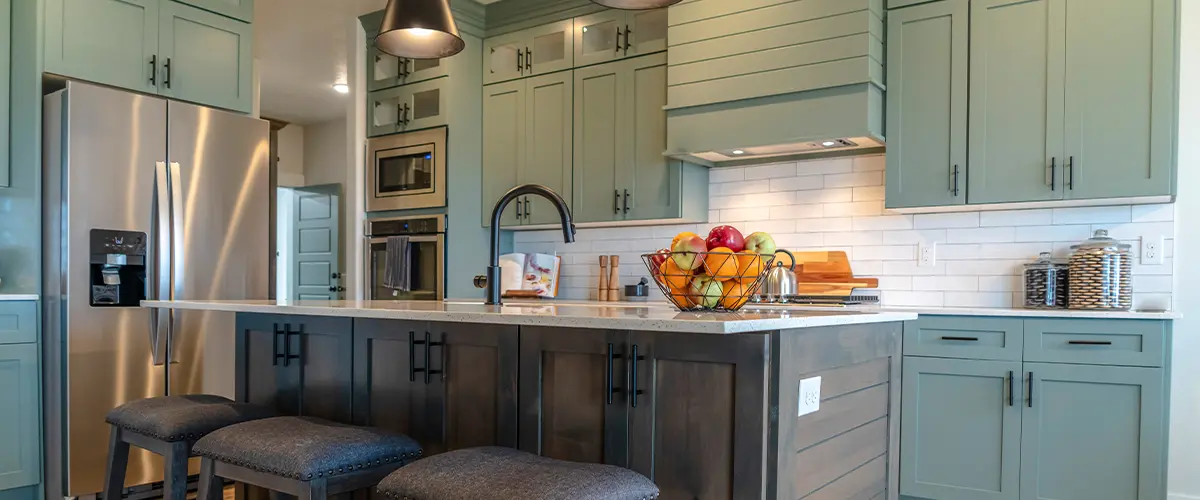Cabinet Vs Cupboard: Ultimate Buyers Guide
Deciding between a cabinet vs cupboard can be confusing. Both serve as versatile storage solutions in homes. This guide will explain their key differences and help you choose the right one for your space.
Let’s get started!

Key Takeaways
- Cabinets are storage units with doors and sometimes drawers used in rooms like kitchens and bathrooms. They can be mounted on walls or free-standing.
- Cupboards are often built into a room's design and might not have doors. They serve as storage for items like clothes, dishes, or food.
- The choice between a cabinet and a cupboard depends on your space, needs, style preference, budget, and the item's intended use.
- When installing cabinets or cupboards, measuring your space carefully is important to ensure they fit well.
- Regular cleaning and maintenance keep cabinets and cupboards in good condition longer.
Defining the Terms
Defining the terms: A cabinet is a piece of furniture with shelves, doors, and drawers used for storage or display, while a cupboard is typically an enclosed space with doors used for storing items such as dishes or clothes.
Each term has its own unique design and function.
What is a Cabinet?
A cabinet is a type of storage unit often found in various rooms like kitchens, bathrooms, and dining rooms. It can have one or more doors with shelves inside for storing items such as dishes, food, or even clothes.
Cabinets come in different sizes and designs. Some include drawers or glass pane doors for displaying items. They serve both functional storage needs and add to the room’s décor.
Moving on to cupboards, let’s see how they compare to cabinets.
What is a Cupboard?
A cupboard is a piece of furniture used for storage. You can spot them because they often stand alone and might be the place where you keep plates or food in your kitchen. In British English, people also use this term to describe what Americans would call a closet.
These are not just any storage spaces; cupboards have doors that open to shelves or space inside where items like clothes, pantry goods, or dishes stay hidden away.
In the Middle Ages, the term cupboard referred to a board or table where cups and other utensils were placed.
Cupboards come in various sizes and can be built into walls or exist as separate pieces of furniture. Some have glass doors so you can see inside without opening them. This makes it easier to find what you need while keeping things tidy and dust-free.
Whether it’s called a pantry cupboard for food storage or a simple closet for storing clothes, these functional pieces serve similar purposes across homes worldwide.

Key Differences Between Cabinets and Cupboards
Cabinets are often designed for specific storage needs in kitchens and bathrooms, with shelves and drawers for organization.
Cupboards typically feature open shelving or a combination of shelves and doors, providing a more versatile storage option throughout the home.
Design and Function
Cabinets often come with doors and sometimes have drawers. They are great for storing items you want to keep hidden, like in kitchens or bathrooms. You can find them mounted on walls or standing on floors.
Cabinets often hold dishes, food, or bathroom supplies. Cupboards do not stand alone; they are part of a room’s built-in furniture. They provide storage but are more open, which means they might not have doors.
The design and function of cabinets and cupboards differ based on where you use them. Kitchen cabinets give space for pots, pans, and other cooking tools. A filing cabinet keeps office papers organized.
Cupboards in living rooms might store books or show off decorative items on open shelves without doors blocking the view. This variety means you can pick the right type of storage furniture to meet your needs and fit your home décor style.
Materials and Construction
Cabinets are typically constructed from wood, plywood, or particleboard and often showcase solid wood or veneer finishes. They frequently come with metal hardware such as hinges and handles.
Conversely, cupboards traditionally use solid wood for the frame and doors, although modern versions may integrate engineered wood products like MDF.
The construction of cabinets allows for a wider range of design options due to the variety of materials used in their production. Cupboards tend to adhere to traditional designs because they primarily employ natural materials like wood.
This suggests that homeowners seeking intricate designs might favor cabinets due to the greater flexibility offered by different construction materials.
Choosing the Right Option for Your Home
Assessing Your Needs
When considering whether to purchase a cabinet or a cupboard, it’s important to assess your needs.
Here are some factors to consider:
- Storage Needs: Determine the amount and type of items you need to store.
- Space Available: Measure the space where you intend to place the cabinet or cupboard.
- Functionality: Consider how you will use the storage unit and what features are essential for your daily use.
- Aesthetic Preferences: Think about the style and design that would complement your home décor.
- Durability: Assess the quality of materials and construction for long-term use.
- Budget: Set a budget that aligns with your requirements and financial constraints.
- Installation Considerations: Evaluate any specific installation requirements or constraints in your home, such as wall mounting or freestanding units.
- Maintenance Effort: Consider how much time and effort you're willing to invest in cleaning and upkeep of the storage unit.
Matching Your Home Décor
- Color and Finish: Ensure the color and finish of the cabinet or cupboard complements your existing decor, from wood tones to paint colors.
- Style and Design: Look for a style that harmonizes with your home's aesthetic, whether it's modern, traditional, or rustic.
- Hardware and Accents: Pay attention to the hardware and accents on the cabinet or cupboard to ensure they align with your overall decor theme.
- Size and Proportion: Consider the size and proportion of the furniture piece in relation to the space it will occupy in your home.
Matching your home decor is crucial when selecting a cabinet or cupboard, as it ensures seamless integration into your living space.
Installation Considerations
Space Requirements
Cabinetry and storage units are available in various sizes, so take into account the space available in your home. Measure the height, width, and depth of the area where you plan to install the cabinetry or storage unit.
This will help ensure a perfect fit into your designated space without any issues.
When considering your space requirements for a tall storage unit or a small room with limited space, keep in mind the opening of doors and drawers in both cabinetry and storage units.
Once you have these measurements, it will be easier to find a storage unit that fits well and complements your home decor seamlessly.
It’s important to note that American English may refer to closets as ‘cupboards,’ which may create subtle differences in terminology when looking for more than just storage solutions for stored items within furniture pieces.
When installing a cabinet or cupboard, accurate measurements are crucial. Make sure to measure twice before making any decisions related to installation requirements – especially if you have custom-built cabinets designed for concealed storage options.
Lastly, always double-check measurements before purchasing materials or beginning any installation process.
Installation Process
- Measure the space: Prior to making any purchases, measure the area where you plan to install the cabinet or cupboard to ensure it will fit properly.
- Select the right location: Take into account factors such as accessibility and functionality when deciding where to install your new storage unit.
- Assemble the components: If you're choosing ready-to-assemble furniture, carefully follow the instructions for putting together the cabinet or cupboard.
- Mounting or placement: Depending on the type of storage unit, you may need to secure it to the wall or floor or simply place it in position.
- Align and level: Use a level to ensure that your cabinet or cupboard is straight and properly aligned with other nearby fixtures.
- Secure connections: If applicable, make sure all doors, shelves, and drawers are securely attached and functioning correctly.
- Final adjustments: Take time to make any necessary adjustments to ensure that your new storage solution functions and looks just as you envisioned.

Maintenance and Care
Cleaning and Upkeep
- Regularly wipe down the surfaces with a mild detergent and water to remove dust and spills.
- Use a soft cloth or sponge to prevent scratches on the cabinet doors and shelves.
- Avoid abrasive cleaners or harsh chemicals that can damage the finish of the cabinets.
- Check and tighten any loose hardware, such as handles or hinges, to prevent them from becoming more problematic over time.
- For wooden cabinets, apply furniture polish occasionally to protect the wood and maintain its luster.
- Consider organizing your items inside the cabinets to prevent overcrowding, which can lead to damage and difficulty in cleaning.
Long-term Durability
When considering long-term durability between cabinets and cupboards, it’s important to note that both options can be durable if well-made and properly maintained. Cabinets made from high-quality materials like hardwoods tend to have excellent long-term durability, ensuring they withstand daily wear and tear.
On the other hand, cupboards constructed with sturdy materials such as solid wood or metal also offer good long-term performance, making them suitable for lasting use in your home.
Regular cleaning and upkeep enhance the longevity of both cabinets and cupboards, maintaining their functionality for years to come.
Considering these factors will help you make an informed decision about which option is best suited for your specific needs-
Leading Manufacturers of Cabinets and Cupboards
Choosing high-quality cabinets and cupboards from reputable manufacturers ensures longevity and aesthetic appeal.
Here are some top manufacturers:
- KraftMaid - Known for customizable options, KraftMaid offers a wide range of styles and finishes that cater to diverse tastes.
- IKEA - IKEA is famous for its affordable yet stylish furniture, providing efficient storage solutions that fit modern homes.
- Thomasville - Combining traditional craftsmanship with contemporary designs, Thomasville produces durable cabinets that enhance any living space.
- American Woodmark - American Woodmark specializes in value-oriented cabinets made from varying wood species, offering a balance of quality and price.

cabinet vs cupboard - faqs
Why Choose Our Team of Experts
With years of experience in providing top-tier cabinet and cupboard solutions, our professionals ensure you receive the best results. Trusting us will save you money long-term.
Are you from Georgia, and you want to get your kitchen remodeling project started? Contact us at .
